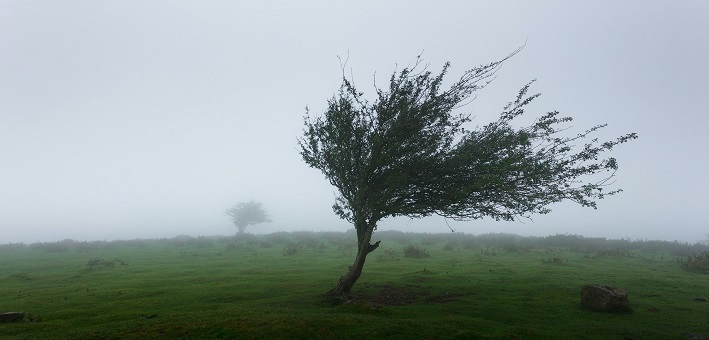Commentary on 1 Corinthians 10:1-13
This week’s epistle reading depends significantly on people’s knowledge of the Exodus and wandering in the wilderness. If the text is read during worship, some listeners might wonder what Paul means by being “baptized into Moses” and how the Old Testament relates to Christ (10:2). Others might be surprised by the straight lines drawn between various sins and their resulting punishments: twenty-three thousand who commit sexual immorality are struck down in a single day (10:5, 8), those who put Christ to the test are destroyed by serpents (10:9), complainers are destroyed by an angel of destruction (10:10). Other listeners, based on very hard experiences, might hesitate to embrace the idea that God “will not let you be tested beyond your strength” (10:13).
These theological, expositional challenges might lead many preachers to move quickly to other texts for this day. But, if read, the passage will likely leave many listeners desiring to know more about those challenging elements. So, a very condensed explanation of complicated questions follows:
What is the relationship between the Old Testament and the New Testament?
The New Testament books themselves do not necessarily or consistently promote the idea that their message supersedes the Old Testament (for example, Matthew 5:17-20; Luke 10:25-8; Romans 11:13-36). This is particularly true for mid-first-century Christians like Paul—there were oral traditions about Jesus but not written texts newly considered as “scripture.”
Today’s text treats the core of the gospel as thoroughly aligned with the core of the existing scriptures of Judaism. Paul has no qualms about describing God’s saving act at the Exodus as “baptism into Moses” (10:1-4a) nor any qualms about equating the rock at Horeb—which brought saving water to the people—with Christ (10:4b). The same God worked through Moses and Jesus. And although most Christians do not feel bound to follow all the particularities of the Law, we are all bound to that “first and great commandment” and “the second [that] is like it” expressed in both Law and Gospel (Matthew 22:34-8; Luke 10:25-8; Deuteronomy 6:4-5; Leviticus 19:18; also Romans 13:8-13).
The prophet Micah similarly expresses a core message of God that unites both Testaments: “What does the LORD require of you but to do justice, and to love kindness, and to walk humbly with your God?” (Micah 6:8). These statements expose the error of all Christian attempts to disparage and condemn Judaism and to construct a replacement faith that depends on elaborate theological systems with endless doctrinal distinctions and complicated ecclesiastical hierarchies—as if any of those constitute a clear path to the still more excellent way of love (1 Corinthians 12:31-13:13). We stand by our doctrines but are known by our fruits.
Does sin have consequences?
The short answer to the question is: yes. Are consequences as immediate as this passage implies? Usually not. Thus the warning: “These things occurred as examples for us, so that we might not desire evil as they did” (10:6). The examples given show disastrous consequences immediately following acts of idolatry (Exodus 32:1-25), sexual immorality (Numbers 25:1-9), putting God to the test (by placing their desires above what God offers as sufficient and good, Numbers 21:4-9), or complaining (accusations that God is not for us but against us, Numbers 16:41-50).
These examples depend on our fears to motivate us to avoid or stop engaging in things that hurt us. They function like warning labels: “Smoking can cause heart disease and strokes.” “Choking Hazard.” “Bridge Ices Before Road.” They “were written down to instruct us” (10:11), and remind us how bad habits bring bad endings.
At the same time, the weakness of a one-sided worst case scenario approach to immorality or sin lies in the experiential fact that bad endings don’t generally happen as immediate lightning bolts. Damages to body, soul, and spirit tend to accumulate over time, killing us by a thousand cuts that we stop noticing. A gradual dulling of our spiritual sense lulls us into believing we’re okay, rather than dying inside.
A warning-only approach must be paired with examples of the promises, the benefits of what is good for us. Just five verses before this passage, Paul states, “I do it all for the sake of the gospel, so that I may share in its blessings” (1 Corinthians 9:23). The gospel ultimately does not proclaim God as a punishing threat to be avoided but as a loving savior to be sought out as the source of true life.
How much suffering and hardship can we take?
It’s tricky to express the power of the end of this passage without unintentionally diminishing people’s circumstances (“No testing has overtaken you that is not common to everyone,” 10:13a). One can also come across as someone whose best advice is “Suck it up. Tough it out” (God will not test you “beyond your strength,” but provides a way to “endure” 10:13b).
We tend to underestimate the number of people in a congregation who will go home to abuse or violence or who experience discrimination or injustice through no fault of their own. It is important to note explicitly, for some, that the passage says that God can provide a “way out” as the path to strength and endurance. It is also important to note explicitly, for others, that God can provide a way to endure within hard circumstances.
Both messages best serve individual, family, and congregational needs when accompanied by an ethos of education and information about people and organizations with track records of helping in times of trial—chronic or acute. This also calls for developing and promoting spiritual practices—inside and outside the congregation—that draw from scripture or Christian tradition: prayer, daily devotions, spiritual direction, support groups, service groups, etc.
God provides us a way to endure, most often through wisdom, encouragement, and love from individuals and communities with their own well-developed capacities for endurance.


March 20, 2022